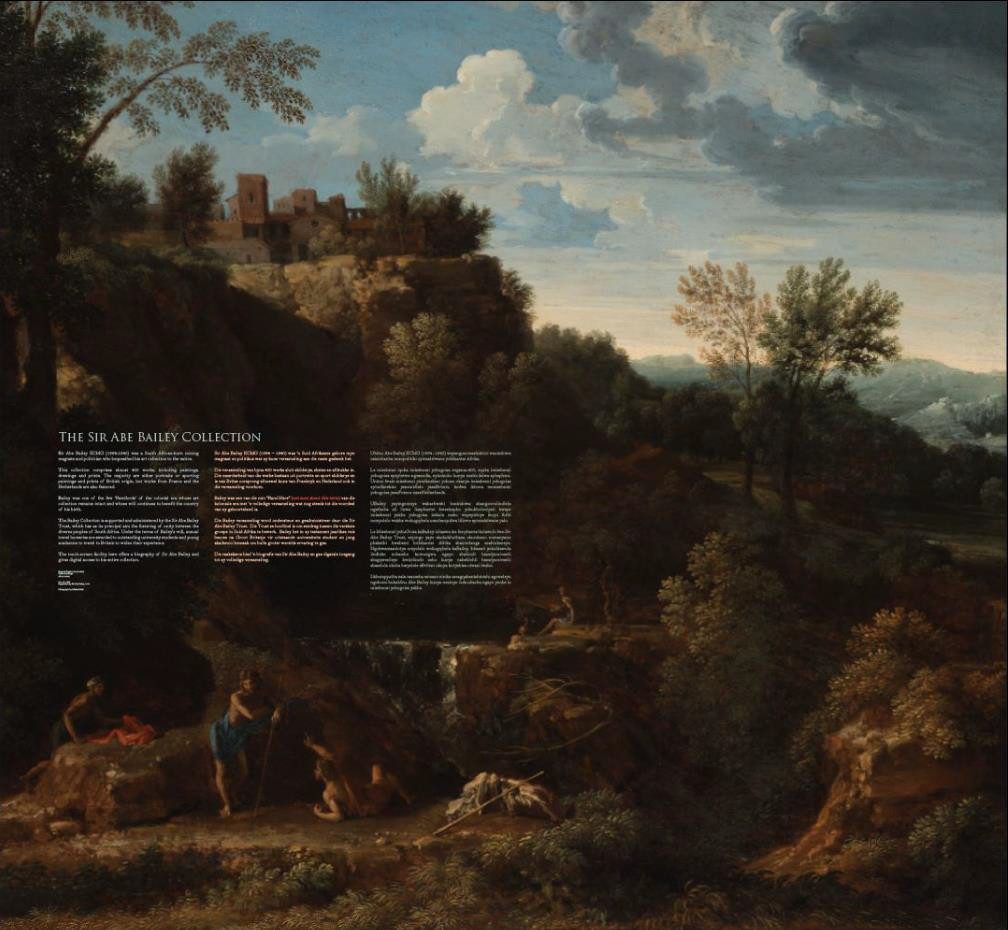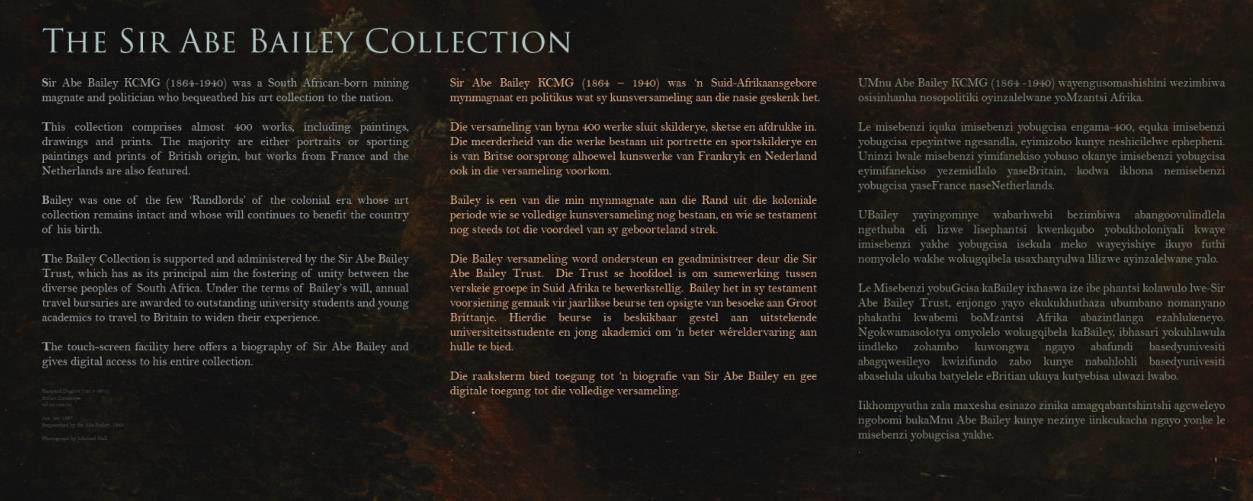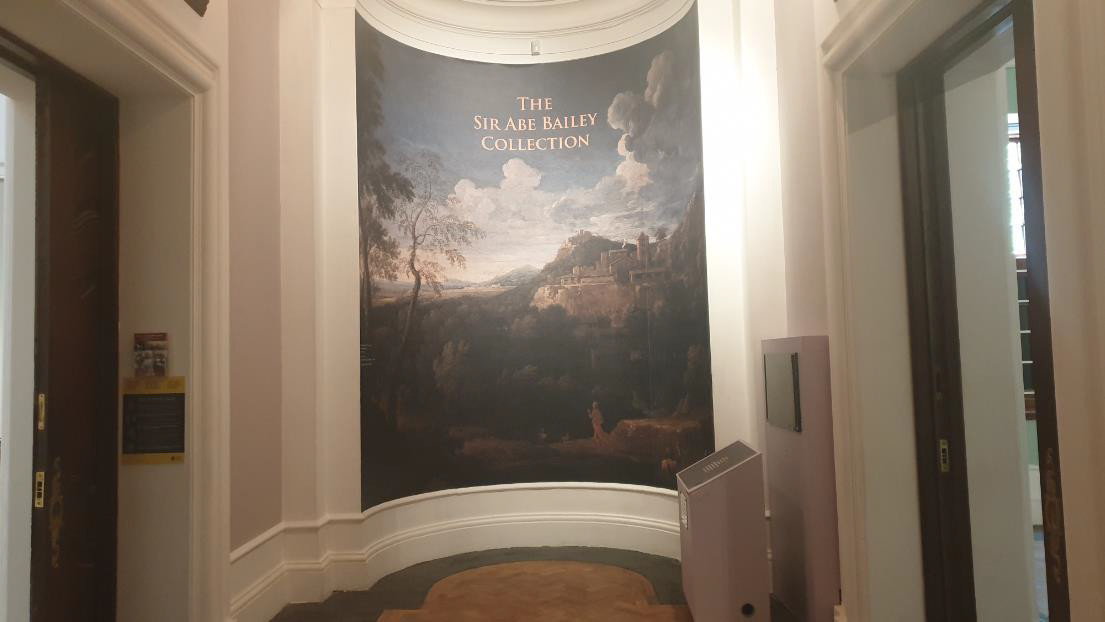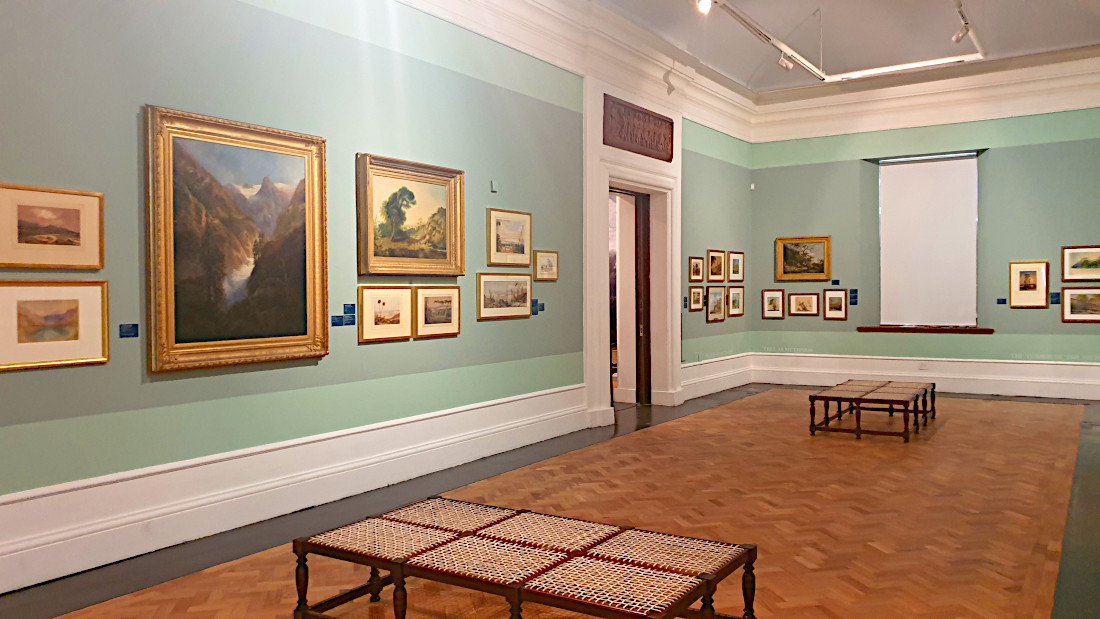2020 Framing Landscape: 'the Picturesque' and 'the Sublime'

Oval Exhibition opened in May 2020
Curator: Hayden Proud and he wrote the following wall text which is in process for printing:
Landscape is, as the theorist WJT Mitchell holds, ‘in its pure form, a western European and modern phenomenon’ that emerged in the 1600s and peaked in the 1800s. Its popularity and growth are exactly coincident with European colonial expansionism. It was also, Mitchell adds, ‘originally and centrally constituted as a genre of painting associated with a new way of seeing’ that we associate with modernity.
Landscape painting in South Africa is thus a demonstrably colonial importation that has developed from Dutch and English precedent. In an essay that ends with pertinent questions about the notions of ‘the picturesque’ and ‘the sublime’ in South African landscape, and whether or not African terrain ‘is readable only through African eyes’, author JM Coetzee ponders whether this ‘quintessentially European’ enterprise of landscape painting is actually not a ‘doomed’ project. Coetzee concludes with a pessimistic thought on the ‘historical insecurity regarding the place of the artist of European heritage in the African landscape’, which, he adds, is ‘an insecurity not without cause’.
The most important aesthetic theories concerning the ‘medium’ of landscape that emerged in Europe in the 18th century and which were coincident with colonial expansionism are ‘the Sublime’ and ‘the picturesque’. While ‘the picturesque’ became a ready formula for the pictorial conception of landscape, ‘the Sublime’, initially synonymous with 19th century Romantic painters like Caspar David Friedrich and J. W. M. Turner, has remained ever resilient and versatile, remaining fluid and manifest in contemporary forms across the arts.
Fundamentally, ‘the Sublime’ is conceived as a quality of magnitude, natural force, grandeur and transcendence that inspires ineffable feelings of awe, wonder and insecurity in the onlooker. In 1756, the Irish-born writer Edmund Burke published his seminal text on the topic entitled A Philosophical Inquiry into the Origin of Our Ideas of the Sublime and Beautiful. In turn, it inspired many poets and philosophers - notably Immanuel Kant. Burke defined ‘the sublime’ as: ‘whatever is in any sort terrible, or is conversant about terrible objects, or operates in a manner analogous to terror, is a source of the sublime. That is, it is productive of the strongest emotion which the mind is capable of feeling’.
This emotional response could be elicited by an overwhelming sense of the immensity of the power and grandeur of nature in either its most terrifying or most uncannily tranquil and transcendent of moods. Such feelings could also be elicited by powerful works of art. Since a work of art is not ‘real’, but only an approximation of ‘real experience’, the emotional response would be tempered by that awareness.
Thus modified, an experience of ‘the sublime’ becomes what Burke described as ‘a sort of delightful horror, a sort of tranquillity tinged with terror’. ‘The Sublime’ has certain attributes. One is vastness, or an impression of it in terms of sheer physical magnitude. Vastness can be reflected in works of art of a huge scale, or inversely, also in ones that are very small. Another is a sense of the infinite or of the immeasurable, whether in height, lateral distance, space or time, which eludes human comprehension. Given no rest or finality, our imaginations submit to feelings of ‘delightful foreboding’ or fear. Such feelings can also be related to a pantheistic sense of the immanence of ‘the Divine’ hidden in all nature.
Not every landscape painting encapsulates ‘the Sublime’. Most arouse our interest, satisfaction and pleasure because they embody aspects that we associate with ‘the picturesque’. The latter was first articulated by an English cleric by the name of William Gilpin. In a publication entitled Essay on Prints (1768), he called it ‘that kind of beauty which is agreeable in a picture’. He outlined that a ‘correctly picturesque’ landscape should have elements that were ‘rough’, ‘intricate’, ‘varied’ and ‘broken’, with an avoidance of straight lines. Architectural elements, such as ruins, if included, could add ‘consequence’. A ‘picturesque’ landscape ought to have a darker foreground, a front or side screens of trees, a brighter middle ‘distance’, and another far-off, luminous, less-defined distance. A lower viewpoint was also mentioned as preferable to a higher one, since a greater prominence of sky could add a potential element of ‘the sublime’.
Gilpin’s recommendations had an earlier precedent in the luminous landscapes of the 17th-century French artists Claude Lorrain and Gaspard Dughet. Lorrain’s fame had spread to England via his prints that were in wide circulation at the time. To a certain degree, his and Dughet’s verdant visions are akin to theatre set-design of the period, with coulisses that hug the vertical edge of one or either side of a framed proscenium. The coulisse was a visual device used to lead the eye from a dark foreground, to a brighter middle ground and then on to an even lighter, luminous distance according to the rules of aerial perspective. Intervening horizontals in the forms of rivers or lakes enhanced spatial effects, giving sources of reflected light, while a calm atmosphere added a glowing ambience.
While Gilpin was aware that a landscape in its natural state provides much to inspire an artist in terms of its colours and textures, it somehow always fell short of his ‘picturesque’ ideals. So, while oil sketches and drawings made directly from nature formed the underlying basis of any painting, any final composition needed strategic additions and adjustments to elevate it as ‘art’.
The concepts of ‘the Sublime’ and ‘the picturesque’ have been synonymous with the rhetoric of landscape painting for centuries, which justifies Mitchell’s assertion of it as ‘an exhausted medium, no longer viable as a mode of artistic expression’. However, inasmuch as the art of painting itself has been proclaimed over the last sixty years to be ‘dead’ by art theorists, it has yet shown itself capable of surprising renewal. The protean ‘medium’ of landscape proves itself to be no different.


The text was translated so it is shown in English, Afrikaans and Xhosa
This exhibition was done with the support of the Iziko Design Team, Amy Septon and Mazi.
Oval exhibition above and Room 13 below – hanging will begin next month


The following Bailey work on paper are in process of archival mounting and framing for the exhibition:
Fancy Gold Frame for: JMW Turner, Lake Nemi, Bailey Collection
|